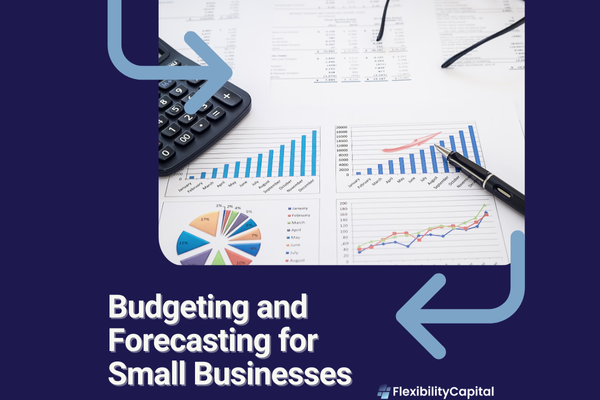In the dynamic world of small business, having a solid grasp of your budget and forecast is paramount for the financial success of your company. A well-organized budget enables effective resource allocation, cost control, and informed spending decisions. This guide offers valuable tips to assist small business owners in getting started with budgeting, and also provides insights for more experienced business owners.
1. Look at Your Current Financial Situation
Start by listing all sources of income and categorizing your expenses into fixed (rent, salaries) and variable (supplies, marketing) costs. This clarity allows you to see where your money is going and helps identify areas for potential savings. Gather the necessary documents; income statement, balance sheet, bank statements and invoices. Examine all documents and ensure all revenue and expenses are accounted for.
2. Review Historical Data
Effective forecasting relies heavily on historical data. Review your past financial statements to identify trends in revenue, expenses, and cash flow. This analysis provides a baseline for making accurate predictions about future performance. Look for seasonal patterns and any external factors that may impact your business, such as market trends or economic shifts.
3. Set Clear Financial Goals
Before diving into the budgeting process, define your short-term and long-term financial goals. Whether it’s increasing revenue, expanding your product line, or improving cash flow, having clear objectives will guide your budgeting and forecasting efforts. Use the SMART criteria—Specific, Measurable, Achievable, Relevant, and Time-bound—to create actionable financial goals. Visit Indeed to learn more.
4. Engage in Collaborative Forecasting
Involve key team members in the budgeting and forecasting process. Collaboration fosters a sense of ownership and can lead to more accurate projections. Encourage input from different departments to gather diverse perspectives on potential costs and revenue streams. This team-oriented approach not only enhances accuracy but also improves overall accountability within your organization.
5. Utilize Technology Tools
Leveraging technology can streamline the budgeting and forecasting process. Numerous software solutions are available that offer budgeting templates, forecasting models, and real-time data analytics. Tools like QuickBooks, Excel, and dedicated budgeting software can simplify financial tracking and reporting, allowing you to focus on strategic decision-making.
6. Review and Adjust Regularly
Budgets and forecasts should not be static documents. Regularly reviewing and adjusting your financial plan ensures that it remains aligned with your business goals and market conditions. Schedule quarterly reviews to assess performance against your budget and make necessary adjustments. This agile approach allows you to respond quickly to changes in your business environment.
7. Monitor Key Performance Indicators (KPIs)
Establishing KPIs is vital for tracking your business’s financial health. Metrics such as gross profit margin, operating expenses, and cash flow can provide insights into your performance relative to your budget. Regularly monitoring these indicators helps you stay on track and make data-driven decisions to improve profitability and efficiency.
8. Prepare for Uncertainty
Forecasting provides valuable insights, and it’s important to acknowledge that uncertainties can arise. Economic fluctuations, unexpected expenses, and shifts in customer behavior may impact your financial projections. To address these potential risks, incorporate scenario planning into your forecasting. This approach will help you develop contingency plans, ensuring your business is prepared to navigate unforeseen challenges.
Conclusion
Effective budgeting and forecasting are foundational to the success and sustainability of small businesses. By understanding the basics, setting clear goals, and leveraging technology, you can create a strategic financial plan that drives growth. Regular reviews, collaborative efforts, and a focus on key performance indicators will help you navigate the complexities of financial management with confidence. As you embrace these practices, you’ll equip your business with the tools needed to thrive in an ever-evolving market. Investing time in effective budgeting and forecasting today will pay dividends in the future, paving the way for a more secure and prosperous business journey.
